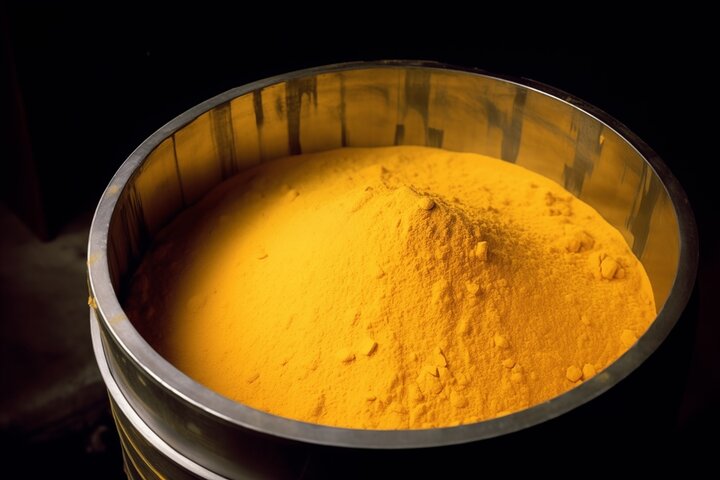In a world of big numbers, powerful brands in global sportswear look advantaged as they pursue their goals of growth and winning greater share of global apparel and footwear spending.
The 2022 FIFA World Cup closed out in spectacular fashion in December with Argentina’s victory and the breaking of viewership records, with an estimated five billion people engaging with the tournament across a variety of media platforms and devices.[1] There is no better event to highlight the power of sport or provide a better stage for sportswear brands such as Nike (sponsored 13 teams, including France), Adidas (sponsored seven teams, including Argentina) and Puma (sponsored six teams, including Morocco).
Over the last decade, trends such as casualisation, athleisure, comfort, and health and wellness have been associated with the growth of the sportswear industry. Hybrid working arrangements since COVID have incrementally added to these trends. Euromonitor forecasts a continuation of relatively robust growth in global sportswear (6-7%) compared to the 4-5% growth rates typically seen in the broader apparel and footwear sector.
Fig. 1: Global Sportswear Market: Continuing Robust Growth Expected
Source: Euromonitor.
In the US, 37% of apparel and footwear sales are sportswear, up from 24% in 2012. Penetration rates are lower in Europe, having risen from 14% to 18% over the last decade, and are increasing in Asia. There is a clear opportunity for penetration in China (14% penetration) to catch up to other Asian countries at 19-25% and rise over time.[2]
We think large sportswear brands are likely to keep growing the category and taking share in a fragmented market as a result of their outsized marketing spending and expansion of their product line-up.
There is also a gulf in revenue size between global sports brands such as Nike (€37 billion), Adidas (€21 billion), Puma (€7 billion) and other brands, with scarce other footwear brands that are €1 billion and larger. Crocs (€3 billion), UGG (€1.6 billion), Doc Martens (€1.3 billion), On Running (€1.2 billion) and Birkenstock (~€750 million), to name just a few.[3] Sportswear brands typically spend 10-11% of sales on marketing, which is higher than that of typical apparel/footwear brands. For instance, Ralph Lauren spends ~5% of sales, while Deckers (UGG/HOKA) spends ~7%. This scale difference, combined with the higher allocation to marketing spending, reinforces the outgrowth of sportswear.
Sports brands have also expanded into sports-fashion adjacencies. It is estimated only 25% of performance products are used for sports, while sports-inspired products are largely casual fashion.[4] The diversification and breadth of products (and consumers) that are served by sports brands are relatively unusual in the apparel/footwear industry, and this supports the brands’ positions as it allows large marketing investments to be spread across a greater number of consumers.
About 75% of sports brands’ marketing spending discussed above relates to team and athlete endorsements.[5] The cost of these endorsements has been bid up as a function of the ability of the largest brands to generate attractive returns on their investment. Smaller brands are effectively crowded out. This translates to lower recognition, consideration, buying intent and loyalty for smaller brands.
For instance, a US$1 billion US running-focused brand such as Brooks could probably make a reasonable return sponsoring the New York City Marathon since participants and spectators are relevant customers with a clear intent to purchase running shoes. However, Brooks would generate very poor returns endorsing, say, tennis player Naomi Osaka (US$10 million per annum), given the high cost to reach a broad audience, including mostly non-runners, and low likely sales impact. Whereas for Nike, Osaka’s value has little to do with appealing to tennis players (an even smaller number than runners). Rather, she supports all viewers’ perceptions of the Nike brand, helping sell products to everyone, especially to particularly large population groups that their marketing team has decided to target (perhaps middle-income American mothers, daughters, Japanese customers, etc.).
Within the industry, we think Puma is an interesting case and is less followed compared to Nike and Adidas.
Puma saw considerable success in fashion during the 2000s, including with hit products such as the Speedcat (motorsport-style sneaker). However, an overreliance on this product saw Puma struggling to maintain momentum as trends changed in the early 2010s. In 2013, a new management team was put in place and a turnaround plan instituted. The plan included refocusing on sports performance to create a halo effect for the brand to drive fashion sales and using celebrities as well as athletes in marketing to grow desirability amongst consumers. Puma’s financial results improved, with revenue growth of a peer-beating 16% per annum over the last five years (to 2022e) and an operating profit margin of 8%.[6]
Puma has positioned itself as ‘the fastest brand in the world’ and is associated with Usain Bolt, who has been a key endorsement for the brand since his teenage years. The brand has re-accentuated its performance heritage (basketball, football) and aims to represent brave, confident, determined and joyful values, with a hint of rebelliousness/cheekiness. These carry the brand well into youth fashion and are a bit different from Nike’s more serious positioning. Brand consideration scores have been improving along with increased global market share, assisted by attractive pricing, which is typically lower than Nike and Adidas for similar products.[7]
One of the key successes in Puma’s turnaround journey has been its partnerships with celebrity influencers, particularly women. These included Rihanna between 2015-2018, Selena Gomez from 2018, and more recently, Dua Lipa, as well as various others. Puma’s product strategy led to prioritising a comprehensive offer for women, with the ambition ‘to own the space where the gym meets the runway’. Overall, the strategy has been successful, and women’s sports apparel is estimated to represent around 35% of Puma’s sales vs. 20-25% for Nike and Adidas.[8]
It is generally well understood that Nike’s scale and brand strength have positioned it well to benefit from the growth of e-commerce, where Nike can sell direct to consumer (DTC) and capture the full retail selling price, in contrast to the traditional wholesale model where the retailer must take its cut. This is positive for both Nike’s sales and its margins. Nike has further accelerated this shift to DTC by actively reducing its wholesale distribution, restricting “hit” products to its company-owned channels, and taking a hard line with retail partners.
What is perhaps less well understood is that Puma is a major beneficiary of Nike’s actions. Lacking the same scale to invest heavily in DTC, Puma is very happy to fill the wholesale space that Nike has vacated or declined to occupy, including with retailers such as Foot Locker and Amazon. In FY21, 70% of Foot Locker’s sales were the Nike brand, but this is expected to fall to 55% in the future.[9]
Despite what seems like a favourable structural outlook for Puma, the stock fell sharply in 2022 before staging a partial recovery in recent months[10] along with others in the sector, mainly because of the external environment and the outlook for consumption.
Looking back at the last few years, COVID lockdowns boosted consumer demand for goods, including sportswear. At the same time, manufacturing (factory closures due to lockdowns) and other supply chain issues impacted supply, resulting in a tight market. This was beneficial to retailers, who saw sales and gross margins lift as a result of less discounting, but for the sportswear brands, the benefits of strong demand took longer to flow through.
Currently, we can observe some pockets of excess inventory in the US and an increase in discounting at the same time as it appears the US and Europe may be headed into recession, which would impact consumer spending. This makes investors very uncomfortable and explains the caution now being applied to stocks in the sector.
From our perspective, we see brands as relatively more insulated from this dynamic compared with retailers, as retailer discounting, which impacts the retailer rather than the brand, tends to support product sales. Puma’s larger wholesale exposure positions it well here, as does its track record of gaining share.
China has been the key growth market for sportswear, but in recent years, Western brands have struggled due to consumer boycotts over the Xinjiang cotton ban, which was driven by accusations of forced labour abuses, coupled with growing nationalism favouring local brands, COVID lockdowns, and increased regulation of celebrity marketing practices.
Again, Puma seems relatively well positioned, with a smaller China exposure compared with Nike and Adidas and better-managed inventory levels in its distribution channels. As China reopens, these headwinds should dissipate, and with much lower penetration than its peers, Puma has plenty of room to grow in this large market.
As we continue to move towards fashionable comfort in the clothes and shoes we wear day to day, sportswear brands appear to be an interesting opportunity for investors seeking long-term growth to take advantage of a short-term setback.
[1] https://www.fifa.com/tournaments/mens/worldcup/qatar2022/news/one-month-on-5-billion-engaged-with-the-fifa-world-cup-qatar-2022-tm
[2] Source: Euromonitor.
[3] Source: Company data, Visible Alpha, Morgan Stanley Research. Data is for 2021, which is the latest available.
[4] Source: External analyst estimates based on discussions with management teams.
[5] See previous footnote.
[6] Puma financial reports.
[7] External analyst estimates based on discussion with Puma management, also observed in the marketplace.
[8] Exane estimates 2021. Note that some sportswear products are unisex brands and do not disclose the percentage of women’s sales.
[9] Foot Locker earnings conference call transcripts.
[10] Source: FactSet Research Systems.
Disclaimer: This article has been prepared by Platinum Investment Management Limited ABN 25 063 565 006 AFSL 221935 trading as Platinum Asset Management (“Platinum”). While the information in this article has been prepared in good faith and with reasonable care, no representation or warranty, express or implied, is made as to the accuracy, adequacy or reliability of any statements, estimates, opinions or other information contained in the article, and to the extent permitted by law, no liability is accepted by any company of the Platinum Group or their directors, officers or employees for any loss or damage as a result of any reliance on this information. Commentary reflects Platinum’s views and beliefs at the time of preparation, which are subject to change without notice. Commentary may also contain forward-looking statements. These forward-looking statements have been made based upon Platinum’s expectations and beliefs. No assurance is given that future developments will be in accordance with Platinum’s expectations. Actual outcomes could differ materially from those expected by Platinum. The information presented in this article is general information only and not intended to be financial product advice. It has not been prepared taking into account any particular investor’s or class of investors’ investment objectives, financial situation or needs, and should not be used as the basis for making investment, financial or other decisions. You should obtain professional advice prior to making any investment decision.

